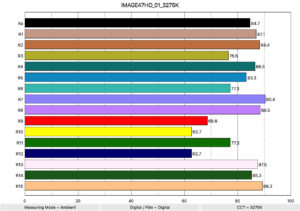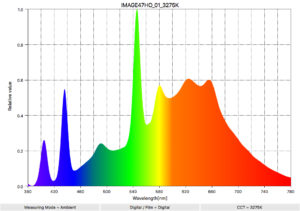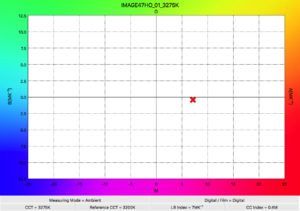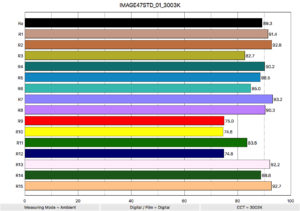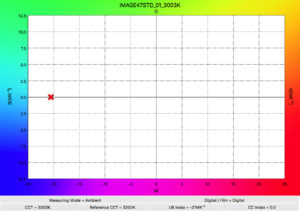Kino Flo’s are tried and true film and television lighting systems, know for their superior light quality and color. I was curious how true their color is being a florescent so I pulled out my C-700 and gave them a reading. To my surprise, the color is not as great as I though it was (as far as numbers go anyway). Plus, there is slight difference between Standard mode and High Output.
Here are the results:
4′ x 4 bank Kino Flo Image 47. Four banks on, 32k globes.
High Output
Standard Output
First thing I noticed from theses readings is that the CRI is not as high as I thought (around 90) and it had the well known fluorescent green spike. While this looks concerning it doesn’t seem to matter on screen, Kino’s are known for their fantastic light and I have never heard anyone question their CRI. So this make me think: How much does CRI really matter? Maybe it’s just a marketing tool? Maybe it’s just relevant to LED’s? Comment below.
Second. High Output mode seems to have a visible color change. Several things happen, the light get warmer, amber-er and the CRI drops by about 5 points (85). The Standard Output has a CRI of about 90 and a slight cyan shift. What is interesting is that to eye the light appears the exact opposite; the HO appears green and the STD appears magenta. You can see from the spectral distribution and CRI charts that the STD output has a little more yellow-red hence the warmer color temperature. With that said, the color shift is negligible, and requires no minus or plus green according to the C-700.
Moral
Numbers are not everything. If it looks good, it looks good.
Notes:
HO give you about 3/4 of a stop more.
Eggcrates in.
All globes were manufactured on the same day 6.11.2013.
This was tested with two units. Both demonstrated the same characteristics.
